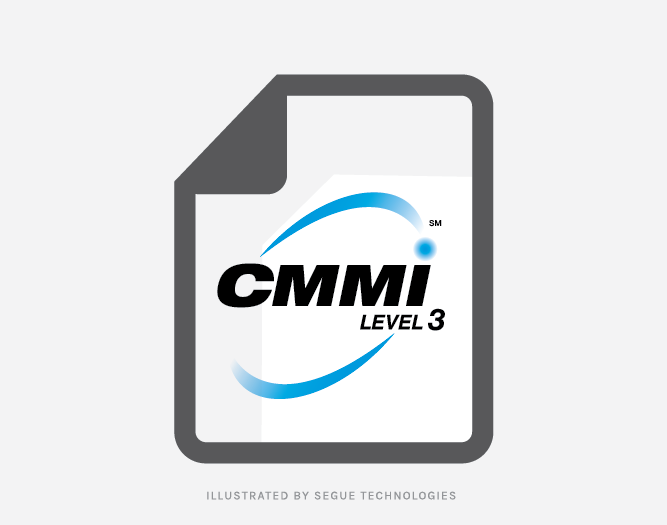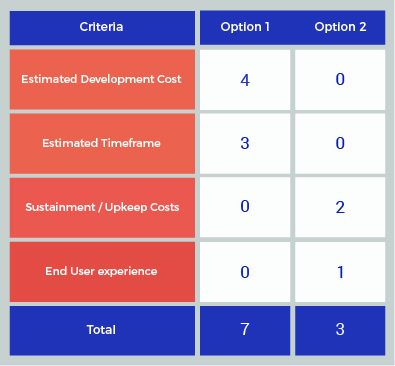When starting an IT project, sometimes one of the first tasks is to choose the best technical solution for the effort. The IT landscape is always changing and with those changes come a variety of tools and technologies. Whether the project involves software development, a database migration or a complete infrastructure overhaul, deciding on a technology or a technical solution can sometimes be challenging.

What is CMMI Decision and Analysis Resolution (DAR)?
As a CMMI Maturity Level 3 appraised company, Segue Technologies is well-versed in this decision-making process and employs Decision and Analysis Resolution (DAR) techniques to help our customers, stakeholders and technical staff with this task. DAR involves the analysis of possible decisions using a formal evaluation process that evaluates identified alternatives against established criteria. The underlying goal of this process is to make key decisions more objectively.
CMMI DAR in Action
Segue recently employed this process in support of one of their government clients, for whom Segue provides development support for a number of legacy web applications. These applications each use a self-contained module that allows users to view, export and/or manipulate data, as well as perform other actions. Segue has been tasked with developing a single centralized module to be used by all applications.
The Segue technical team performed some preliminary analysis and determined that in order to build this interface, a decision needed to be made on the development approach for the new module. The Segue team prepared a formal Technical Options document that explained the issues at hand and identified the criteria against which the options would be evaluated. These included:
- Estimated Development Cost
- Estimated Development Timeframe
- Future Sustainment/Upkeep
- End-User Experience
Each of the criteria identified was assigned a value to indicate its importance to the client, as indicated below:
- Estimated Development Cost = 4
- Estimated Development Timeframe = 3
- Future Sustainment/Upkeep = 2
- End-User Experience = 1
The Segue team determined there were two feasible (2) options:
- Develop a module that will have core/common features that are shared across all applications or
- Develop a module that will include core/common as well as features that are unique to only a subset of applications.
The pros and cons of these options were identified in relation to the criteria and incorporated into the following matrix and the better option among each criterion is selected:

Based on the input above for each option, Option 1 would be the more suitable of the two options since development costs and timeframe were minimal. Assuming the client chooses the best option for each criterion (as depicted above with the checkboxes), the weights associated with each criterion further demonstrate that Option 1 is the best choice moving forward:

Finally, the team prepared their recommendations based on the matrix above and presented them to the customer. In this case, Option 1 was chosen by the customer because it provided a short-term solution that could be implemented quickly and with minimal cost. This option was also selected because it could be accomplished within the existing period of performance.
DAR helped guide the development team on how to implement a technical solution and also ensured that the stakeholders had sufficient information to make an educated decision.